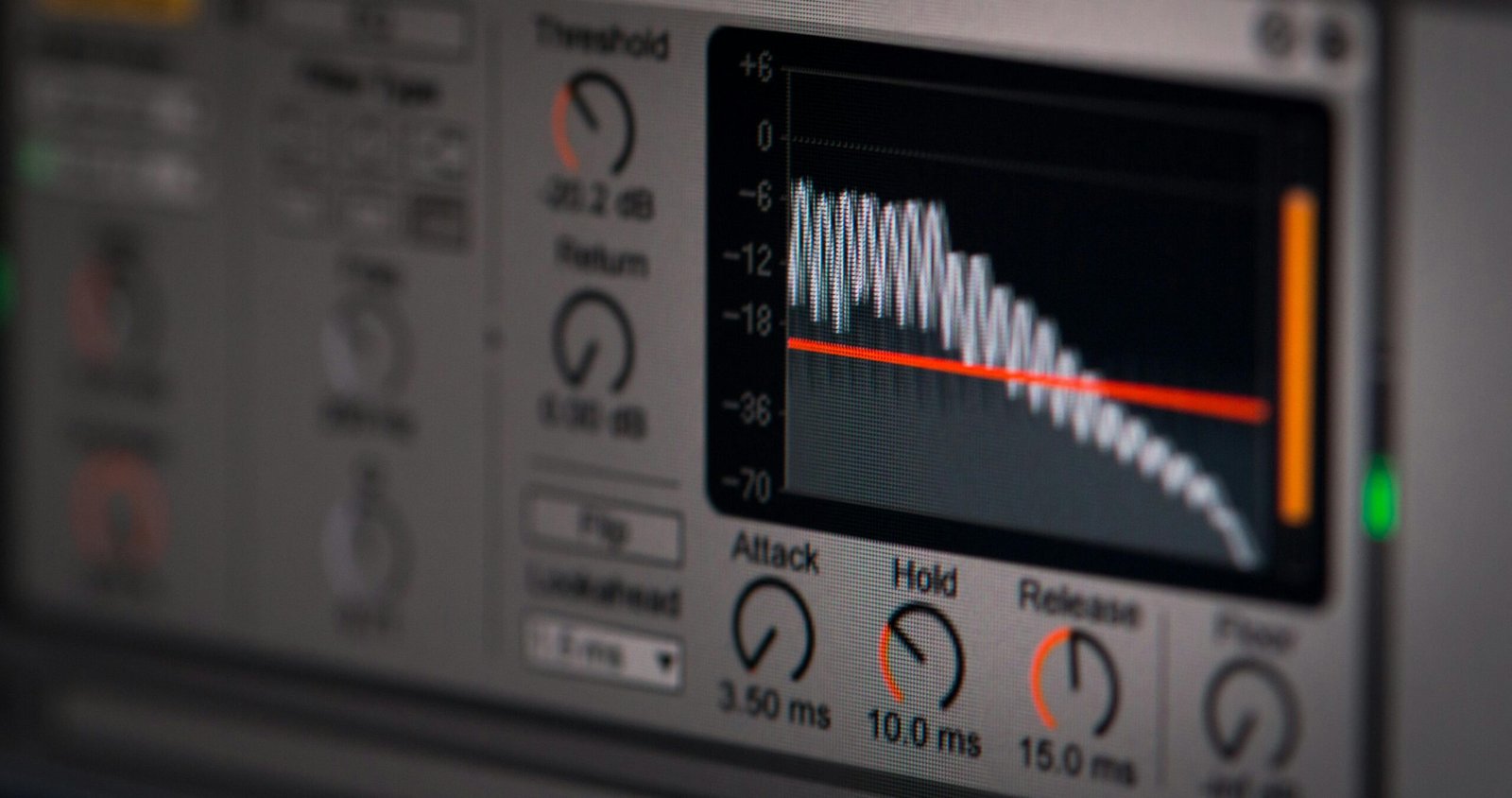For centuries, musical tuning has evolved through various standards. But none has sparked more debate than the shift from 432 Hz to 440 Hz. This article explores the history, science, and conspiracy theories surrounding this controversial change.

Table of Contents
Introduction
The vibration of a musical note can feel like more than just sound—it can resonate with something deeper inside us. For many seeking spiritual connection through music, the debate between 432 Hz and 440 Hz tuning represents a choice between natural harmony and artificial standardization. But is there truly a conspiracy behind the standardization of musical pitch, or is this simply a modern myth cloaked in pseudoscience?
You’ve likely heard the claim: “For centuries, 432 Hz was the natural tuning frequency, in harmony with the universe itself—until shadowy forces deliberately changed it to 440 Hz in 1953 to disconnect humanity from its natural vibration.” This compelling narrative has captivated musicians, sound healers, and conspiracy theorists alike. Today, we’ll separate fact from fiction and explore the fascinating history behind this musical controversy.
The Historical Evolution of Musical Pitch
Before diving into conspiracy theories, we must understand an important truth: throughout most of musical history, there was no universal standard pitch. Musicians in different regions, eras, and musical traditions tuned their instruments according to local customs, available reference tones, or practical considerations.
Lynn Cavanagh, in her detailed historical review, notes that “in Europe prior to the twentieth century, pitch varied widely from place to place and from century to century.”[1] Even within a single region, standardization wasn’t considered necessary. Musicians simply adapted to local variations by transposing music or writing scores in multiple keys.
Historical records of organ pitches in Germany before 1600, for example, show variations from as high as A=567 Hz to as low as A=377 Hz.[1] This remarkable range—spanning nearly half an octave—demonstrates just how flexible pitch standards were.
Did You Know?
Famous composers like Handel and Mozart actually preferred pitch standards lower than both modern options. Handel favored A=423 Hz, while Mozart preferred A=422 Hz—both approximately a half-semitone lower than our current A=440 Hz standard.[1]
The 19th century brought significant changes as concert venues grew larger and instrument technology evolved. Alexander Ellis, a pioneering researcher in the history of musical pitch, observed that pitch began steadily rising during this period. This was partly driven by practical concerns: larger concert halls required brighter, more penetrating sounds, which higher-pitched instruments could deliver.[1]
This steady rise in pitch created problems for vocalists, who couldn’t simply adjust their physiological limitations. Some opera houses pushed pitch levels to around A=450 Hz—more than a semitone higher than Mozart’s preferred tuning. This put considerable strain on singers’ voices and led to the first serious efforts toward standardization.

The Standardization Movement
The first major step toward standardization came in 1859 when a French government commission established A=435 Hz as the legal standard in France. This compromise was designed to balance the higher brilliance that audiences had grown accustomed to with the practical needs of vocalists.[1]
However, different countries continued to maintain their own standards. In 1896, Britain’s Royal Philharmonic Society adopted A=439 Hz after a somewhat questionable calculation based on temperature differences.[1] Meanwhile, in North America, pitch remained unstandardized and continued to creep upward.
The rise of radio broadcasting in the early 20th century created a new impetus for international standardization. The ability to broadcast performances from around the world made pitch inconsistencies more noticeable and problematic. In 1939 (not 1953, as often claimed in conspiracy theories), an international conference in London agreed that A=440 Hz would become the worldwide standard for concert pitch.[1]
This standard was further solidified when the International Organization for Standardization (ISO) reaffirmed A=440 Hz in 1955 and again in 1975.[1] The fact that reaffirmation was necessary suggests that, even after official standardization, pitch levels continued to vary in practice.
| Year | Event | Standard |
|---|---|---|
| 1700s-1800s | Mozart & Handel Era | ~A=422-423 Hz |
| 1859 | French Government Commission | A=435 Hz |
| 1896 | British Royal Philharmonic | A=439 Hz |
| 1939 | International Conference in London | A=440 Hz |
| 1955 | ISO Reaffirmation | A=440 Hz |
| 1975 | ISO Second Reaffirmation | A=440 Hz |
The 432 Hz Movement and Its Claims
The modern movement advocating for A=432 Hz tuning emerged primarily in the late 20th century, though it references historical precedents. Proponents make several key claims:
1. Mathematical and Cosmic Alignment
Supporters argue that 432 Hz has special mathematical properties that align with cosmic patterns, including the Fibonacci sequence and the dimensions of ancient structures like the pyramids. They suggest this alignment creates a more harmonious resonance with the natural world.[2]
2. Historical Precedent
Some claim that ancient civilizations, including those of Egypt, Greece, and India, used instruments tuned to 432 Hz. They often cite the Italian composer Giuseppe Verdi, who advocated for A=432 Hz tuning in the 19th century.[3]
3. Physiological Benefits
Perhaps most compelling are claims about the physical and psychological effects of 432 Hz tuning. Proponents suggest it promotes relaxation, reduces anxiety, lowers heart rate, and even facilitates healing. These effects are often attributed to 432 Hz’s alleged alignment with natural body rhythms and “Earth frequencies.”
Interest in sound healing with crystal singing bowls often intersects with the 432 Hz movement, as practitioners seek frequencies that maximize therapeutic benefits.
The Nazi Conspiracy Theory Debunked
One of the most persistent and inflammatory components of the 432 Hz conspiracy theory is the claim that Nazi propaganda minister Joseph Goebbels was responsible for imposing the 440 Hz standard as a way to make people more aggressive or susceptible to mind control.
“A popular meme on social media makes a series of allegations about the musical tune pitch A=432Hz and A=440Hz, including that the latter was a standard imposed by the Nazis to manipulate their enemies. Multiple experts told Reuters these allegations are unfounded.”[4]
This conspiracy theory fails on multiple fronts:
Chronological impossibility: The international standardization at 440 Hz occurred in 1939, before Nazi Germany’s maximum influence in Europe. The standard was formally adopted by the ISO in 1955, a decade after the fall of the Nazi regime.[1]
Historical documentation: There is extensive documentation of the gradual evolution toward the 440 Hz standard throughout the 19th and early 20th centuries, driven by practical concerns in music performance and broadcasting.[5]
Lack of evidence: No credible historical evidence connects Nazi policy to international pitch standardization efforts. As Reuters concluded in a 2021 fact-check, these allegations are unfounded.[4]
Scientific Research on 432 Hz vs. 440 Hz
Moving beyond conspiracy theories, what does scientific research tell us about the actual effects of these different tuning standards?
The research is limited but growing. One double-blind, crossover pilot study published in the journal Explore in 2019 compared the effects of listening to music tuned to 440 Hz versus 432 Hz. The study found that 432 Hz music was associated with a slight decrease in heart rate compared to 440 Hz music, suggesting a potentially greater relaxation response.[6]
Another study published in 2020 examined the effects of 432 Hz versus 440 Hz music on sleep quality in patients with spinal cord injuries. The researchers found some improvement in sleep parameters with 432 Hz music, though they emphasized the preliminary nature of their findings.[7]
A 2022 study investigating the effects of these tuning standards on anxiety and stress in emergency nurses found that 432 Hz music was effective in decreasing stress levels.[8]
These studies suggest there may be some physiological differences in how humans respond to music at different tuning standards. However, the research remains preliminary, with small sample sizes and methodological limitations. More rigorous studies are needed to establish definitive conclusions.
For those interested in experiencing these potential benefits firsthand, sound bath meditation offers an immersive way to explore healing frequencies and their effects on mind and body.

Modern Perspectives on Musical Tuning
Today’s musical landscape embraces both standardization and experimentation. While mainstream orchestras, recording studios, and digital instruments overwhelmingly use the A=440 Hz standard, there’s a growing community of musicians and listeners exploring alternative tunings.
Many classical music ensembles specializing in historical performance practice use period-appropriate tunings, often lower than A=440 Hz. Meanwhile, a vibrant community of contemporary artists records and performs music tuned to A=432 Hz, particularly in genres connected to meditation, healing, and spirituality.
The debate has been further democratized by digital technology. Software tools now make it simple to convert recordings between different tuning standards, allowing listeners to compare the subjective differences for themselves. This accessibility has fueled online discussions about tuning preferences, though these often blur the line between scientific evidence and subjective experience.
Personal Exploration
If you’re curious about the potential effects of different musical tunings, consider these approaches:
- Listen to comparisons of the same piece tuned to different frequencies
- Try meditation or relaxation practices with music in both 432 Hz and 440 Hz
- Attend a sound bath session specifically using 432 Hz tuned instruments
- Keep a journal of your subjective responses to different tunings
Conclusion: Beyond the Conspiracy
The 432 Hz conspiracy theory exemplifies how historical facts can become distorted and sensationalized in service of a compelling narrative. The shift to A=440 Hz standard tuning was not a sinister plot but rather the culmination of centuries of evolving musical practices, technological developments, and practical compromises.
That said, the subjective preference many people express for 432 Hz music deserves respect and further scientific investigation. The preliminary research showing potential physiological effects is intriguing and warrants more rigorous study.
Perhaps the most valuable aspect of this controversy is how it encourages us to listen more consciously, to consider how different frequencies affect our bodies and minds, and to question assumptions about musical standards we take for granted. In this way, the 432 Hz movement—separated from unfounded conspiracy theories—can enrich our relationship with music and sound.
Whether you prefer the bright clarity of 440 Hz or the warmer quality some perceive in 432 Hz, the most important thing is that music continues to fulfill its age-old role: connecting us to ourselves, to each other, and to the mysterious resonances that make sound such a powerful force in human experience.
References
- Cavanagh, L. (2009). A brief history of the establishment of international standard pitch a=440 hertz. WAM: Webzine about Audio and Music. Retrieved from https://www.wam.hr/sadrzaj/us/Cavanagh_440Hz.pdf
- Palmblad, S. (2018). A= 432: A superior tuning or just a different intonation? How tuning standards affects emotional response, timbre and sound quality in music. Luleå University of Technology. Retrieved from https://www.diva-portal.org/smash/get/diva2:1215149/FULLTEXT01.pdf
- Gribenski, F. (2018). Negotiating the Pitch: For a Diplomatic History of A, at the Crossroads of Politics, Music, Science and Industry. In International Relations, Music and Diplomacy: Sounds and Voices on the International Stage. Palgrave Macmillan. Retrieved from https://hal.science/hal-03005013/file/Chap%208.%20Negotiating%20the%20pitch_FG.pdf
- Reuters Fact Check. (2021, August 2). Debunking social media claims about A=432Hz and A=440Hz musical pitches. Reuters. Retrieved from https://www.reuters.com/article/fact-check/debunking-social-media-claims-about-a432hz-and-a440hz-musical-pitches-idUSL1N2P915O/
- Falcon, P. (2022). The Historical Development of Concert Pitch in the USA Orchestras. Retrieved from https://www.researchgate.net/publication/359119923_The_Historical_Development_of_Concert_Pitch_in_the_USA_Orchestras
- Calamassi, D., & Pomponi, G. P. (2019). Music tuned to 440 Hz versus 432 Hz and the health effects: A double-blind cross-over pilot study. Explore, 15(4), 283-290. Retrieved from https://pubmed.ncbi.nlm.nih.gov/31031095/
- Calamassi, D., Lucicesare, A., et al. (2020). Music tuned to 432 hz versus music tuned to 440 hz for improving sleep in patients with spinal cord injuries: a double-blind cross-over pilot study. Acta Bio Medica, 91(1), e2020014. Retrieved from https://pmc.ncbi.nlm.nih.gov/articles/PMC8023109/
- Calamassi, D., Vigni, M. L. L., Fumagalli, C., et al. (2022). Listening to music tuned to 440 hz versus 432 hz to reduce anxiety and stress in emergency nurses during the Covid-19 pandemic: a double-blind, randomized controlled trial. Acta Bio Medica, 93(1), e2022025. Retrieved from https://pmc.ncbi.nlm.nih.gov/articles/PMC9534204/





